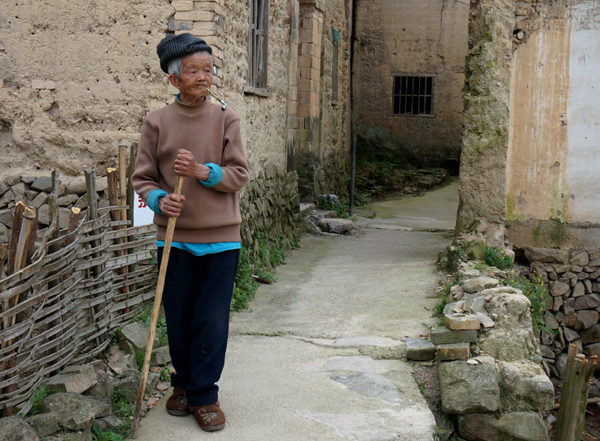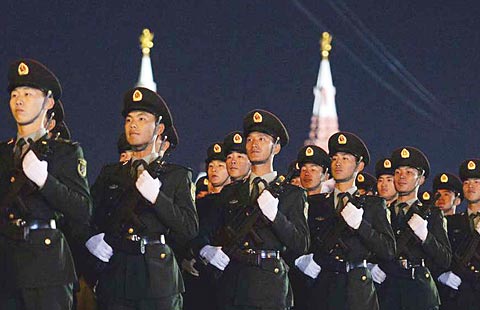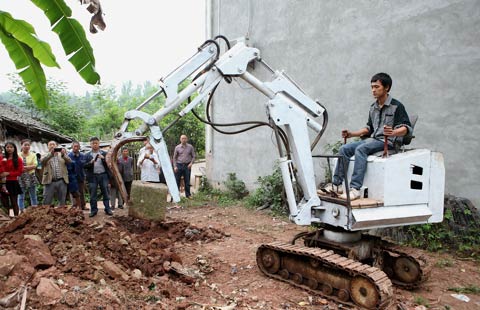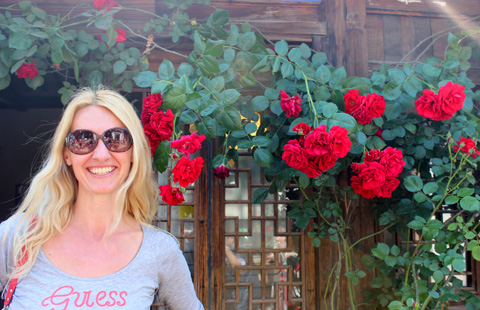Preserving the past to finance the future
Updated: 2015-05-07 07:43
By Yan Yiqi(China Daily)
|
||||||||
Preserve and protect
 |
|
An elderly resident relaxes in Yangjiatang village in Songyang. Photo by Yan Yiqi/China Daily] |
Youtian and Yangjiatang are two of 50 villages in Songyang that have been listed as traditional Chinese villages - those with cultural and historical features worth preserving and protecting - by the ministries of culture, finance, and housing and urban-rural development. By January, 2,555 villages across China had been added to the list.
Huo Xiaowei, editor-in-chief of Traditional Chinese Villages Bulletin, said it will be difficult to pass these villages down to the coming generations.
"The conservation and development of China's historic villages has been seriously threatened and faced enormous challenges during the rapid economic development that has occurred in China in the past few decades. The expected increase in the urbanization rate from 53.7 percent in 2013 to 70 percent in 2030 means many villages, including some historic ones, face the prospect of being demolished," he said.
In response, Songyang has moved to develop and protect the village. Last year, reconstruction projects, costing a total of about 20 million yuan ($3.2 million), started in more than 20 villages, including Youtian and Yangjiatang.
Wang Jun, Songyang's magistrate, said that the plan is to protect these ancient villages by developing tourism.
"To encourage villagers to stay and renovate the old houses, we need to offer them sufficient income. Tourism seems to cause the least harm to the environment," he said.
Luo Deyin, professor of architecture at Tsinghua University in Beijing, has participated in the reconstruction of two historic houses in Songyang's Pingtian village. He supports the plan to save the villages through tourism.
Luo, who has worked on reconstruction projects in traditional villages in several provinces, said the ancient villages will quickly die if the infrastructure for basic tourism isn't put in place.
"Currently, the simplest and most effective way of helping a traditional village to survive in a time of rapid urbanization is the development of local tourism," he said, adding that tourism brings outsiders to the villages, creating opportunities for them to make contact with the residents.
"This will eventually alter the villagers' views of their cultural relics, and they will try to protect them instead of tearing them down," he said.

 Ten photos you don't wanna miss - May 7
Ten photos you don't wanna miss - May 7
 Siberian tiger cubs in NE China
Siberian tiger cubs in NE China
 The wonders of the Yaxi Expressway
The wonders of the Yaxi Expressway
 China joins rehearsal for Victory Day parade in Moscow
China joins rehearsal for Victory Day parade in Moscow
 Man impresses with home-made excavator
Man impresses with home-made excavator
 Blossoms a boon for tourism
Blossoms a boon for tourism
 Camel caravan on the Silk Road
Camel caravan on the Silk Road
 Met Museum celebrates China with annual gala
Met Museum celebrates China with annual gala
Most Viewed
Editor's Picks

|

|

|

|

|

|
Today's Top News
China pledges continued help as Nepal rebuilds
Annual China-US air passenger trips top 6m
Investors tee up in US golf paradise
Met gala draws Chinese fashion bloggers' criticism
Understanding culture called key for foreign businesses in China
US authorizes ferry service to Cuba
China Daily's website takes top spot in readership
Xi will honor soldiers during Russia trip
US Weekly

|

|






